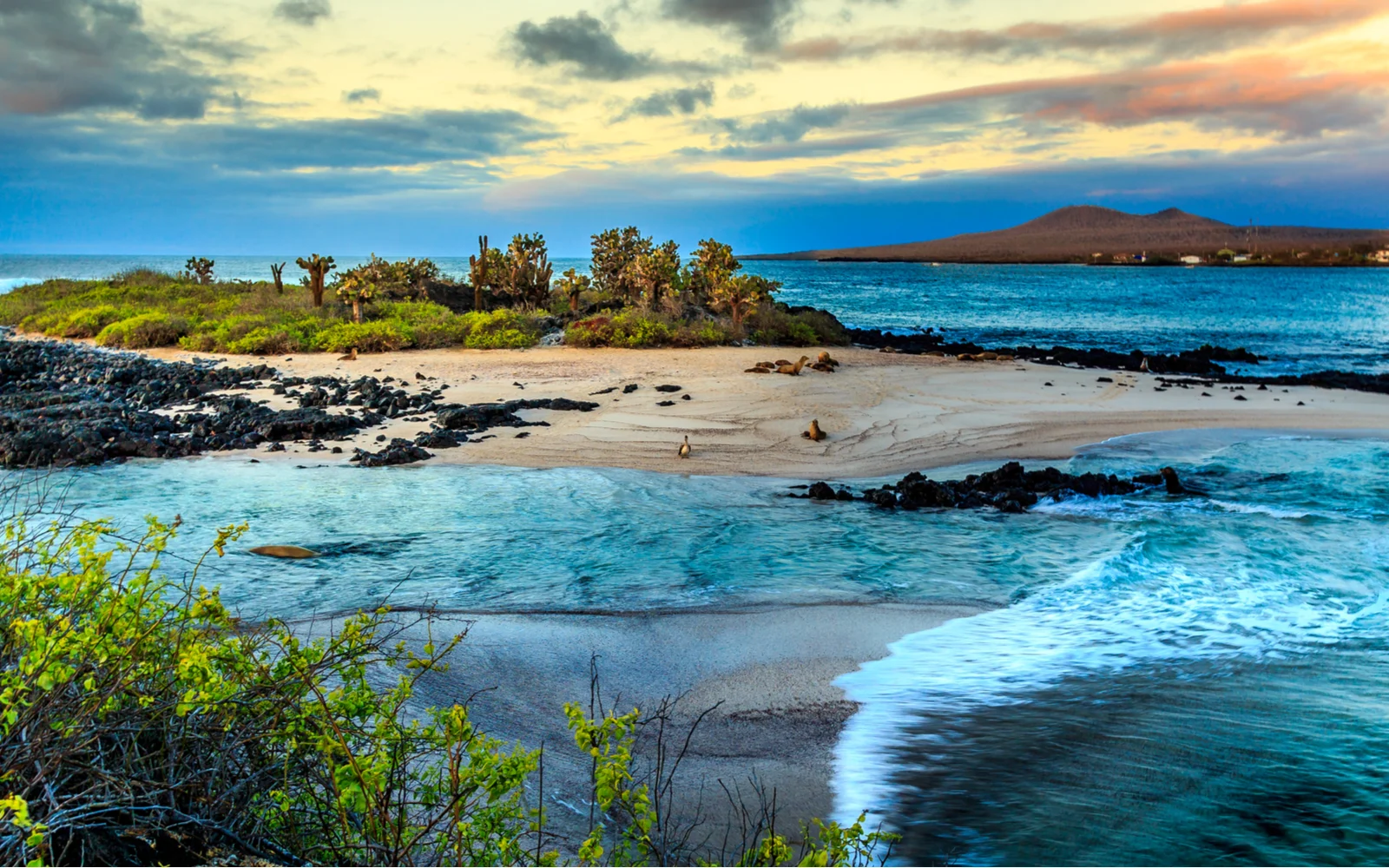What's the best time to visit the Galapagos Islands?
The best time to visit the Galapagos is between December to May, when warm weather pairs with calm seas for ideal snorkeling and beach days. During this season, you can witness unique wildlife activities, such as baby tortoises hatching, amidst a comfortably managed number of tourists. This period ensures a memorable experience with nature’s wonders, balanced by thoughtful visitor regulation.
The Galapagos Islands are a must-visit destination for nature lovers because you can find landscapes and animals that exist nowhere else in the world. Most trips to the Galapagos Islands start out at the Charles Darwin Research Station, since it’s his research that popularized the islands after all.
After checking out the exhibits, see the animals in real life by going on a birdwatching tour or heading to La Ruta de la Tortuga to see the unique turtles. Other activities you must try on the islands include swimming, snorkeling, and surfing with seals on San Cristobal Island.
The Galapagos Islands are a wild location, which means that you can expect to spend most of your time outdoors. Timing your visit for good weather is important, and you can bet we’ll show you all you need to know below.
Overall Best Time to Visit the Galapagos Islands
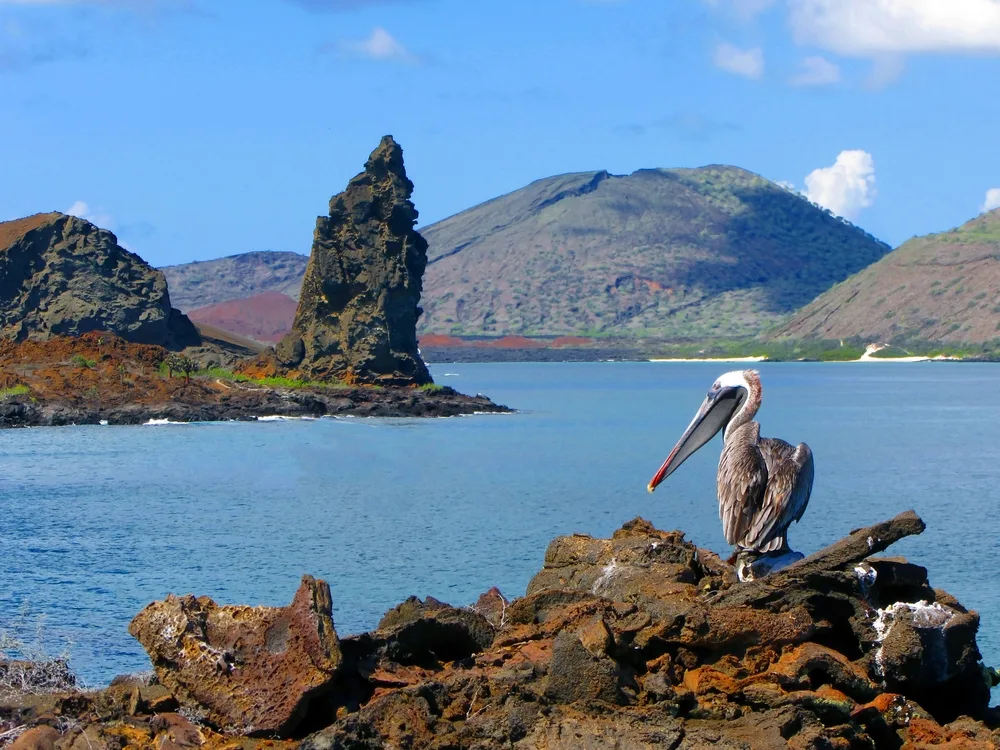
SidWorld/Shutterstock
The best time to visit the Galapagos Islands is during the beginning of the hot rainy season, from late December to March. The Galapagos Islands are located close to the equator, but due to the influence of the ocean currents and winds, aren’t as hot as many other tropical locations.
The weather from December to May is regularly hot, while June to November have cooler temperatures. January to May is commonly referred to as the hot rainy season, because the weather is warm and there are sporadic daily showers.
The rest of the year is taken up by garúa season, a type of fine misty rain. Although showers are heavier during the rainy season, this is actually a better time to visit for spending time at the beach.
Average high temperatures are 84-86 degrees Fahrenheit, meaning that it’s warm enough to swim and enjoy other beach activities. The water temperature is also higher, so you can go swimming and diving without a wetsuit.
The seas are also calmer during this time, which is beneficial for a lot of reasons. Calmer waters mean better visibility when snorkeling, so you can see the amazing animals that are underwater with you (it also means you won’t get as seasick on the ride over).
The animals on the Galapagos Islands are spectacular all year round, but here are just some of the displays you can see during the rainy season:
- Baby giant tortoises hatching (December-March)
- Flamingo nesting season (February)
- Frigate birds mating season (March)
- Blue-footed boobies courtship dances (April)
Keep in mind that this is the most popular time to visit the Galapagos Islands though. While it never gets too crowded because the government heavily controls how many visitors arrive, expect to see other people around.
Cheapest Time to Visit the Galapagos Islands
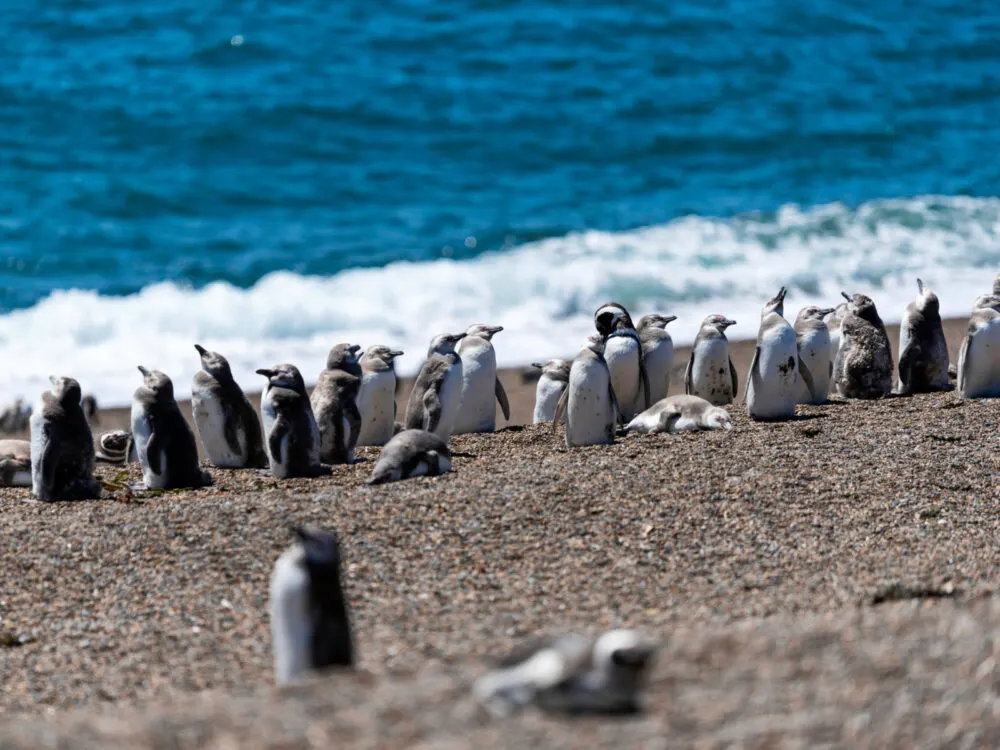
Michele Rinaldi/Shutterstock
The cheapest time to visit the Galapagos Islands is towards the end of the dry season, in October and November, when there tend to be fewer people around.
No matter when you visit, a trip to the Galapagos Islands is going to be fairly expensive. There are limited options for accommodation and transportation to the islands, so operators can keep their prices high.
Outside of the few towns on the islands, you need special permits and guides to explore, which can be logistically time-consuming and expensive.
However, you can save some money by visiting outside of the two peak seasons. October-November is the window between the summer rush and the high season (coinciding with the rainy season), so there is lower demand.
The prices of accommodation tend to go down slightly during this season, so see if you can negotiate a discount. You’ll save the most money on transportation during this time.
The price of flights from mainland Ecuador decreases from September to November, which is the most affordable way to go if you’re self-touring. Ferry prices also decrease, but keep in mind that seas can be rough during this time—they’re low for a reason.
The best way to save money is to book things on the islands, since many locals don’t advertise on the internet yet. During the slower shoulder season, you may be able to negotiate a discount on an expensive day tour.
Least Busy Time to Visit the Galapagos Islands
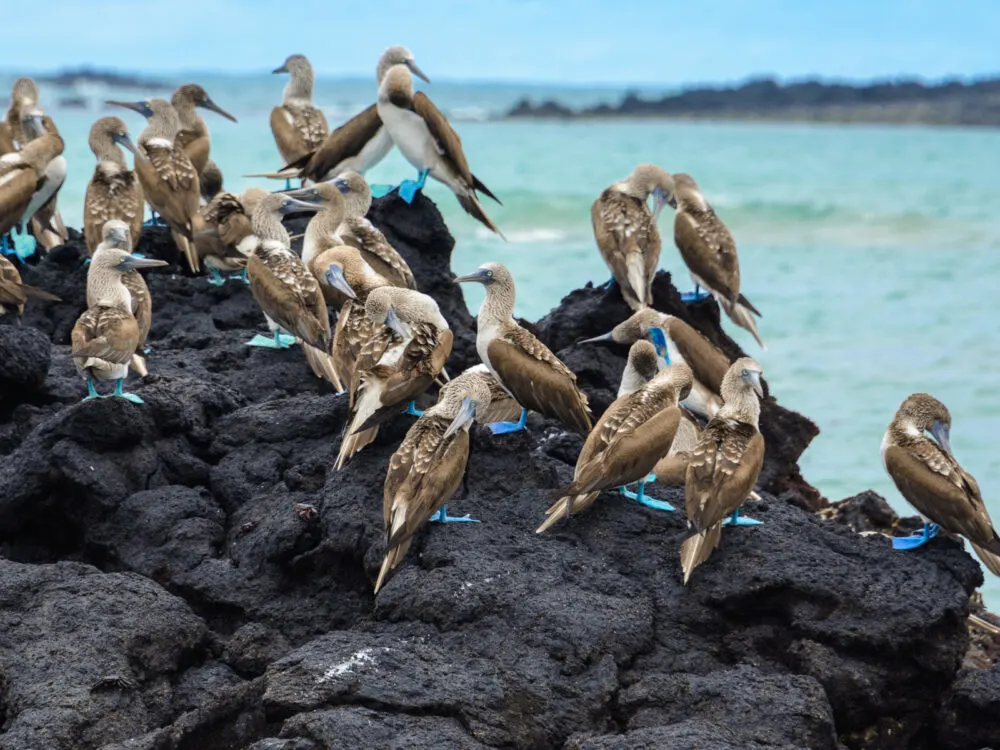
Alberto Loyo/Shutterstock
The least busy times to visit the Galapagos Islands is during the shoulder seasons of April-May and October-November. The Galapagos Islands have two high seasons. Since the rainy season is the best time to go, expect crowds from December to March.
The peak summer months in the Northern Hemisphere, June-August, are also full of international visitors who have time off then. The transitional periods between these two high seasons have far fewer visitors, which means you get blissful nature to yourself.
April-May is at the end of the hot rainy season, and these two months are the hottest on the island. While hiking can get a bit unpleasant, you can always jump into the water to cool off.
This is the best time to see mating rituals and migrating bird species such as the albatross are starting to return. Thanks to the season of rain, the island landscapes are lushest during this time. The fall shoulder season of October-November has slightly worse weather.
Temperatures are cooler, around 68-70 degrees Fahrenheit. This is garúa season, when the islands are covered in a fine mist, so the weather can be foggy and not so nice. However, the cooler weather is perfect for hiking.
October-November is one of the best times to see baby animals on the Galapagos Islands. Blue-footed boobies hatch in October, and they make a funny sight strutting around the island. Sea lions are usually born in August, but they don’t start to be active until October and November.
Worst Time to Visit the Galapagos Islands
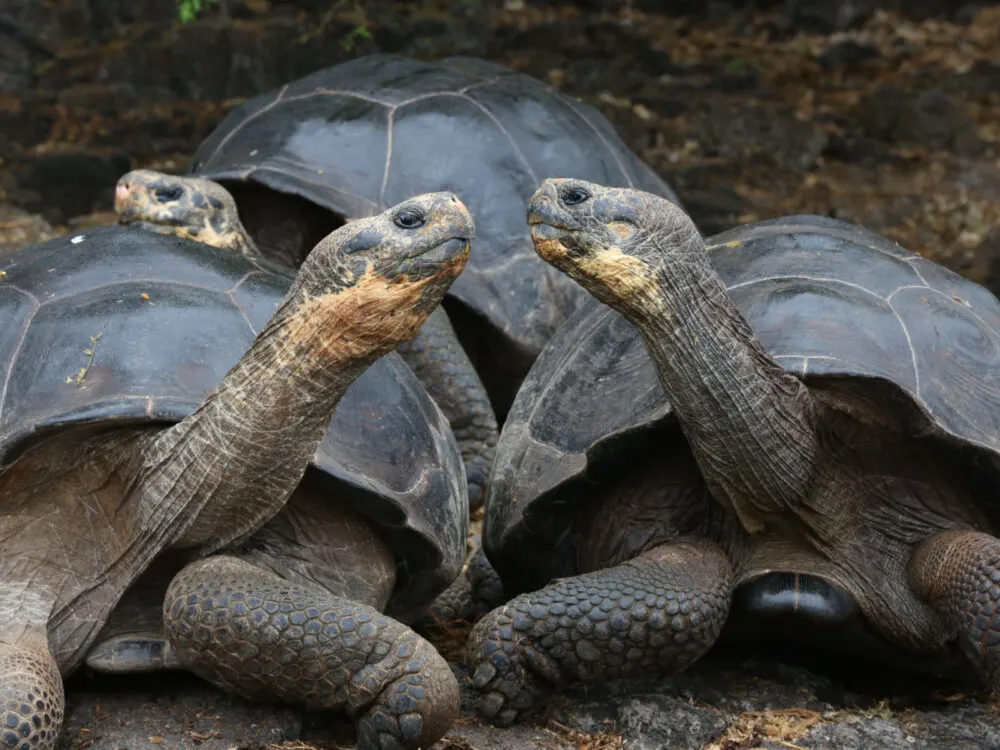
Ian Kennedy/Shutterstock
While there are not truly bad times to visit the Galapagos Islands, if we had to pick, we’d say the worst time to visit is during the peak summer period (June-August).
Although this is summer in the Northern Hemisphere, the weather in the Galapagos Islands is at its coolest during this time. Expect temperatures to barely rise above 70 degrees, not the best swimming weather.
Sea conditions are at their roughest during this time, especially in August. Ocean currents and wind make the waves choppy, which means that the ferries between the islands or cruises from the mainland turn into very rough rides.
Summer is also one of the most popular times to visit the Galapagos Islands since many people have time off from school or work.
The islands don’t necessarily get crowded since the government strictly limits how many people can visit any given day, but you’ll have to book well in advance to get the tour or hotel you want.
The benefit of visiting during this time is that the animals are at their most active. The few migrating species that come to the Galapagos are here at this time, such as humpback whales and albatrosses.
This is the best time for birdwatching since the waters around the islands are rich in plankton, attracting seabirds. Flamingos are particularly active in August, while penguins are active on the central islands in September.
Galapagos Islands by Month: Climate & Activities

Maridav/Shutterstock
Still unsure about the best time to visit the Galapagos Islands? Take a look at our summary of the weather and climate by month below:
January
Summer temperatures in the Galápagos Islands range from 74-84°F. It’s an excellent time for snorkeling, diving to witness marine life, and observing the famous giant tortoises nesting.
February
Similar to January, February maintains warm temperatures between 74-84°F. It’s an ideal month for birdwatching, especially the mating rituals of blue-footed boobies and frigatebirds.
March
As summer continues, temperatures range from 74-86°F. March is perfect for exploring the underwater world, with clear visibility for diving and snorkeling. Land iguanas also start nesting.
April
Fall temperatures range from 73-84°F. April is a great time for hiking, with land vegetation turning lush. Sea lions give birth to pups, and green sea turtles start nesting.
May
May sees temperatures ranging from 71-82°F. It’s an ideal month for observing waved albatrosses, nesting Nazca boobies, and the blooming of Galápagos cotton.
June
In June, arrives in the Galapagos Islands with temperatures between 68-79°F. June is perfect for spotting humpback whales, witnessing the breeding season of marine iguanas, and enjoying cooler weather for land exploration.
July
July maintains cool temperatures from 66-77°F. It’s a popular month for observing the unique mating dance of the blue-footed booby and witnessing the arrival of sea lion pups.
August
Temperatures in August range from 64-76°F. It’s an excellent time for underwater photography, with clear water conditions. Giant tortoises start nesting, and penguins become more active.
September
Spring temperatures range from 64-75°F. September is ideal for exploring the unique flora of the islands, with many plants in bloom. Sea lion pups become more playful.
October
In October, the Galapagos Islands see temperatures ranging from 65-76°F. It’s a great month for snorkeling with playful sea lions and observing the courtship of frigatebirds.
November
Spring continues with temperatures between 66-77°F. November is perfect for observing sea lion pups learning to swim and the courtship rituals of Galápagos penguins.
December
Summer returns to the Galapagos Islands with temperatures ranging from 68-79°F. December is an excellent time for birdwatching, with the arrival of migratory birds, and for exploring the islands both on land and underwater.
Frequently Asked Questions
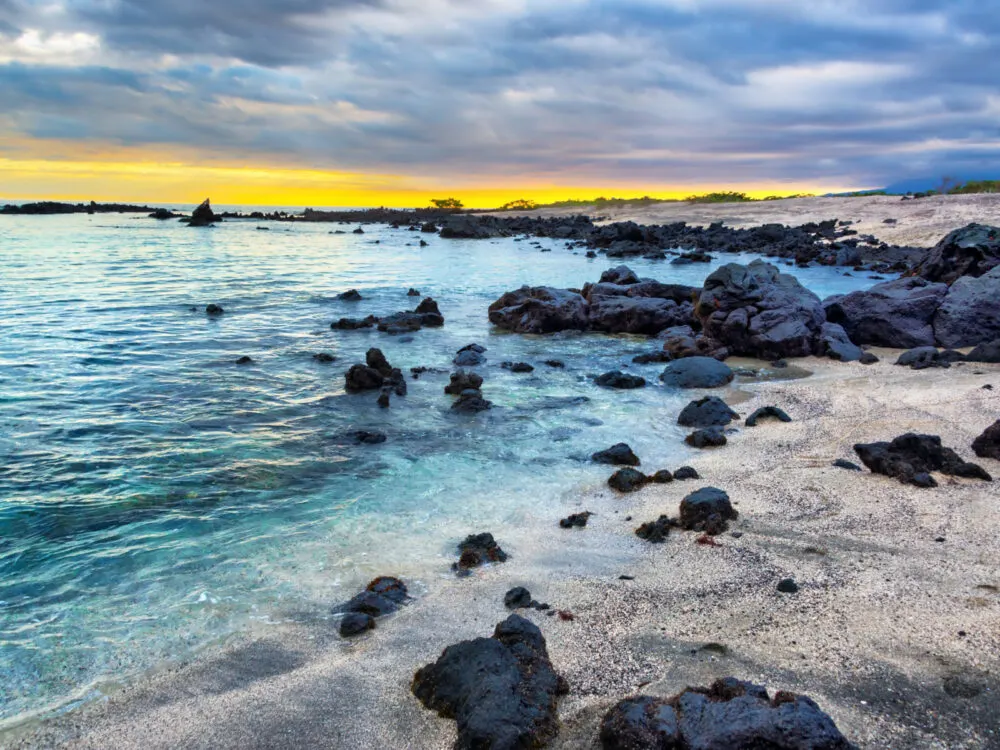
Jess Kraft/Shutterstock
Here are a few of the most common questions people ask about visiting the Galapagos Islands:
What is the best month to go to the Galapagos Islands?
The best month to go to the Galapagos Islands is March, when the weather is warm, and the ocean is calm, and mating rituals are beginning on the islands.
When is the rainy season in the Galapagos?
The rainy season in the Galapagos is from December to May, but showers are never too heavy. Expect sporadic rain.
How many days do you need in the Galapagos Islands?
You should spend at least seven days in the Galapagos Islands. You want to budget time for plenty of exploration, plus keep in mind that getting from island to island takes time.
Are the Galapagos Islands expensive?
Yes, traveling to the Galapagos is expensive. Many parts can only be visited on an organized tour, and there aren’t many options for transportation and other services.
Can you swim in the Galapagos Islands?
Yes, you can swim in the Galapagos Islands. However, you have to be careful as the open ocean can have strong currents and you don’t want to disturb the animals.
So, What’s the Best Time to Visit the Galapagos Islands?
The best time to visit the Galapagos Islands is during the hot rainy season, from December to March, when conditions are best for swimming and sailing. However, each season has its advantages, from more active animals to lower prices.
So, with so much to see and do and plenty of amazing times to visit, what are you waiting for — book your trip today and experience for yourself all that the Gaglapagos Islands have to offer. Happy travels!



